With the plethora of products unveiled by JBL at CES this year, it was only fitting that there would be a brand-new iteration of the successful Charge series. Besides slight aesthetic changes, the Charge 5 is now not only waterproof — as all its predecessors were — but also dustproof, as its IP67 certification vouches for. And of course, the fifth generation still respects the Charge family’s core values by serving as a power bank, with a killer battery life of 20 hours.
On the audio side of things, the Charge 5’s long excursion driver gets a slight power boost. Along with the tweeter and the dual bass radiators, James Bullough Lansing’s company claims it delivers impressively rich and clear audio to “get that big room sound, even outdoors.” Let’s take this rugged power bank Bluetooth speaker for a spin, and see how it fares in our Audio tests!
Key specifications include:
- Dimensions: 223 x 96.5 x 94 mm (8.7 x 3.76 x 3.67 inches)
- Weight 0.96 kg (2.11 lbs)
- Speakers: One high-excursion 52 mm x 90 mm woofer, one 20 mm tweeter, two passive radiators (one on each side)
- Connectivity: Bluetooth (no mini-jack input)
- IP67 (waterproof and dust-tight)
- 20 hours of battery life
Test conditions:
- Tested with Motorola HSPK for both music and movies
- Communication protocol used: Bluetooth for both music and movies
About DXOMARK Wireless Speaker tests: For scoring and analysis in our wireless speaker reviews, DXOMARK engineers perform a variety of objective tests and undertake more than 20 hours of perceptual evaluation under controlled lab conditions. This article highlights the most important results of our testing. Note that we evaluate playback using only the device’s built-in hardware. (For more details about our Speaker protocol, click here.) The JBL Charge 5 falls into the Essential category of devices in the DXOMARK Speaker rankings.
Test summary
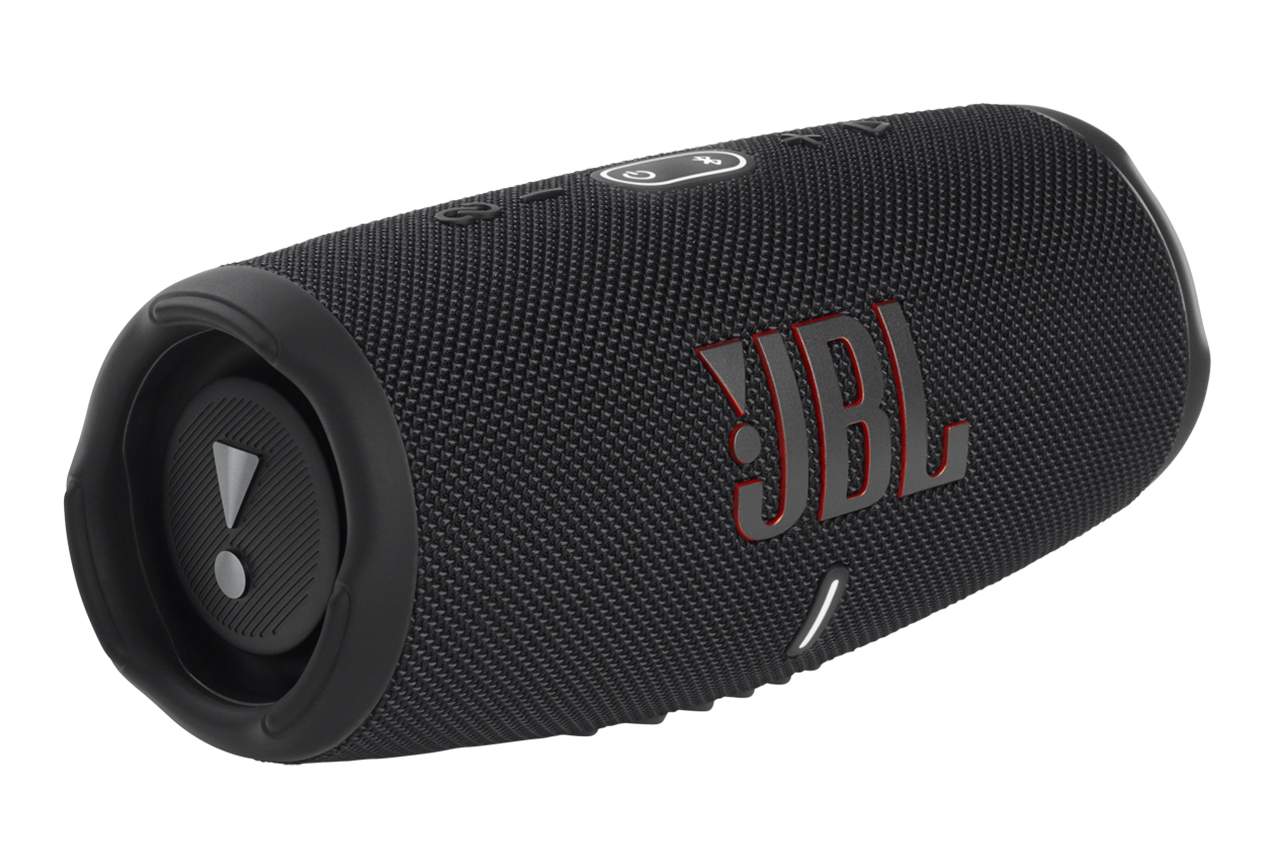 JBL Charge 5
JBL Charge 5


Pros
- Relatively flat-sounding tonal balance, natural timbre
- Overall satisfying bass consistency, with subtle presence boost in upper midrange that helps voice-related content cut through
- Precise attack and good bass precision
- Overall good performance in both low and high SPL scenarios
Cons
- Lack of low midrange makes some content sound thin
- Lack of high-end and low-end extension
- Presence boost is often unwelcome
- Weak punch
- Mono rendering
-
Not loud enough at maximum volume, below-average volume consistency
The Charge’s fifth generation racks up an overall Audio score of 127, which places it merely two points away from the Essential category’s top-scoring speaker, the Sonos One. The JBL Charge 5 delivers a fairly flat and natural timbre, fairly strong and precise bass, sharp attack, and good presence in the upper midrange. Further, the rugged speaker also performs well at both low and loud volumes, and excels at keeping sonic artifacts to a minimum. All these attributes, along with its other non-audio qualities, make it a very good choice for an outdoor, kitchen or bathroom use and for friendly gatherings, but also for playing music, podcasts, or movies before going to bed.

While it isn’t ill-suited for any use case per se, if you’re looking for a speaker to watch movies or party with, the Charge 5 might not be the best option. This is due to its recessed lower midrange (making certain content, such as male voices, sound too thin), its weaker punch, its insufficient maximum volume, and its mono playback.
Sub-scores explained
The DXOMARK Speaker overall score of 127 for the JBL Charge 5 is derived from a range of sub-scores. In this section, we will take a closer look at these audio quality sub-scores and explain what they mean for the user, and we will show some comparison data from two of the device’s competitors, the Sonos Roam and the Sony SRS-XB33.

Timbre
JBL Charge 5
152
DXOMARK timbre tests measure how well a speaker reproduces sound across the audible tonal range and takes into account bass, midrange, treble, tonal balance, and volume dependency.
As promised, the Charge 5 delivers good clarity in addition to a relatively flat and natural tonal balance across all use cases, and an enhanced presence in the upper midrange. Further, this high midrange boost doesn’t turn into aggressiveness as volume increases.
Although treble manages to remain bright, it is slightly dulled by the speaker’s limited high-end extension. The low midrange is impaired by a lack of fullness, which induces a thinner sound for certain content: male voices could have more body, for example, and instruments such as pianos lack roundness. When pushing the volume up, treble becomes fairly harsh, and lower midrange sources sound even thinner.

Despite lacking extreme low-end, considering the speaker’s dimensions, bass is pretty consistent overall (especially at nominal volume) and strong. In terms of use cases, the Charge 5’s timbre restitution makes it suitable for nearly any scenario except for partying, due to its high-volume shortcomings. As for music, it is rare to see a device so consistent across all genres, from classical to Asian pop, including electronic, hip hip, Latin, and jazz.

Dynamics
JBL Charge 5
137
Our dynamics tests measure how well a device reproduces the energy level of a sound source, taking into account attack, bass precision, and punch.
The Charge 5’s drivers and passive radiators reproduce dynamics fairly well. Bass precision is appreciable overall, and except at low volumes, attack is very sharp. Despite a lack of sustain, the sound envelope for lower frequencies is accurate, and remains so even at high volumes, apart from a slightly shorter decay. At low volumes, however, the lack of sustain becomes too noticeable.
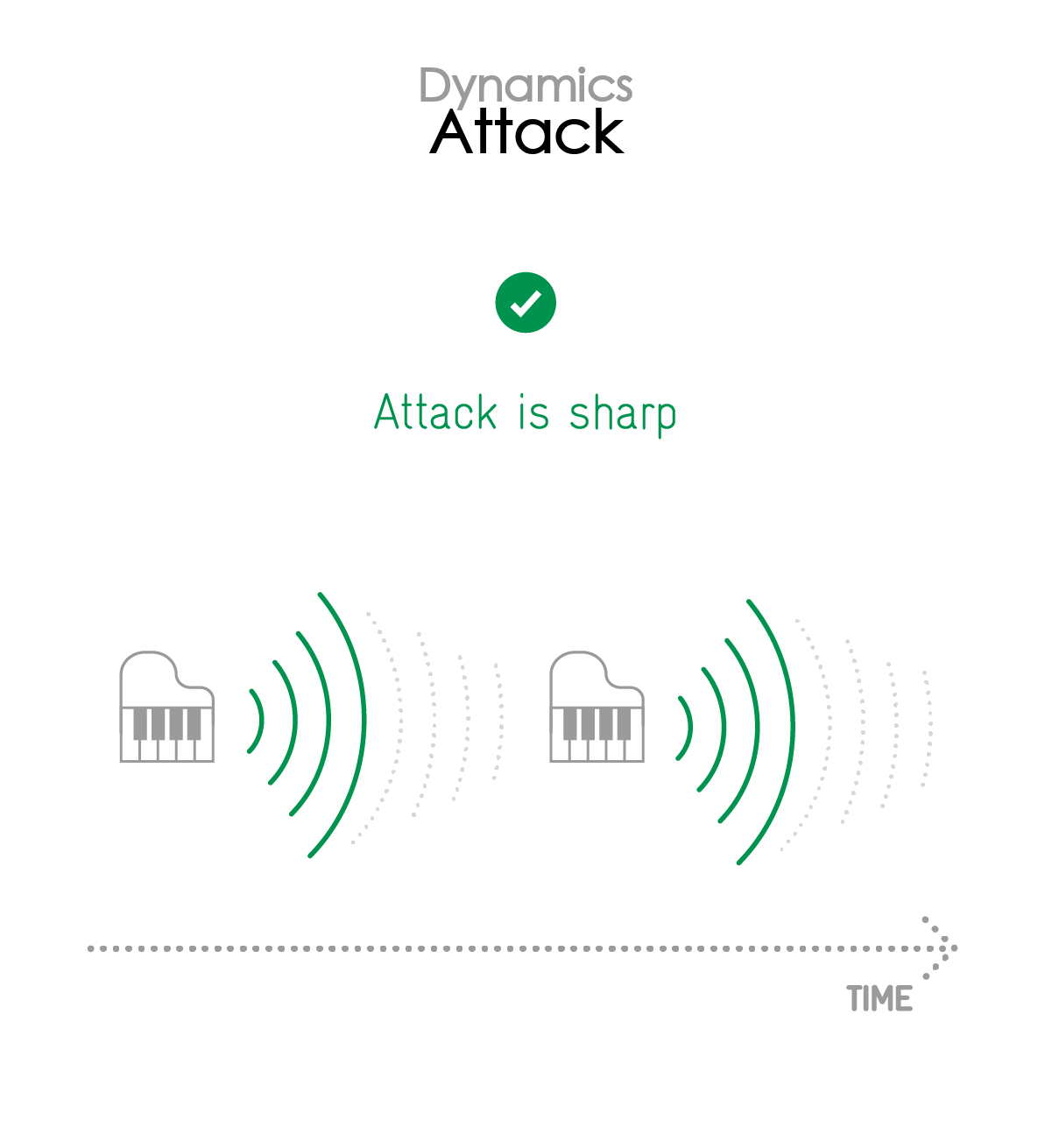

With the speaker’s honorable dynamic range along with a good rendition of transient sounds, sounds could be a lot punchier if it weren’t for poor low midrange energy, especially at high volumes.

Spatial
JBL Charge 5
111
Our spatial tests measure a speaker’s ability to reproduce stereo sound in all directions, taking into account localizability, balance, wideness, distance, and directivity. Please note that wideness is 0 on mono speakers and on speakers that cannot deliver a significant stereo effect.
The Charge 5 has one woofer and one tweeter; this means it does indeed have two drivers, but neither is dedicated to one channel: both channels are mixed into one, then sounds are assigned to each driver according to their frequency. De facto, this means the Charge 5 is a monophonic speaker and thus has no wideness to offer.
Nonetheless, localizability of the sound sources is precise. The midrange boost has a tendency to emphasize the feeling of proximity, which can make voices seem much closer than they should. Listening from the rear offers a more realistic distance rendering, despite voices sounding somewhat muffled.
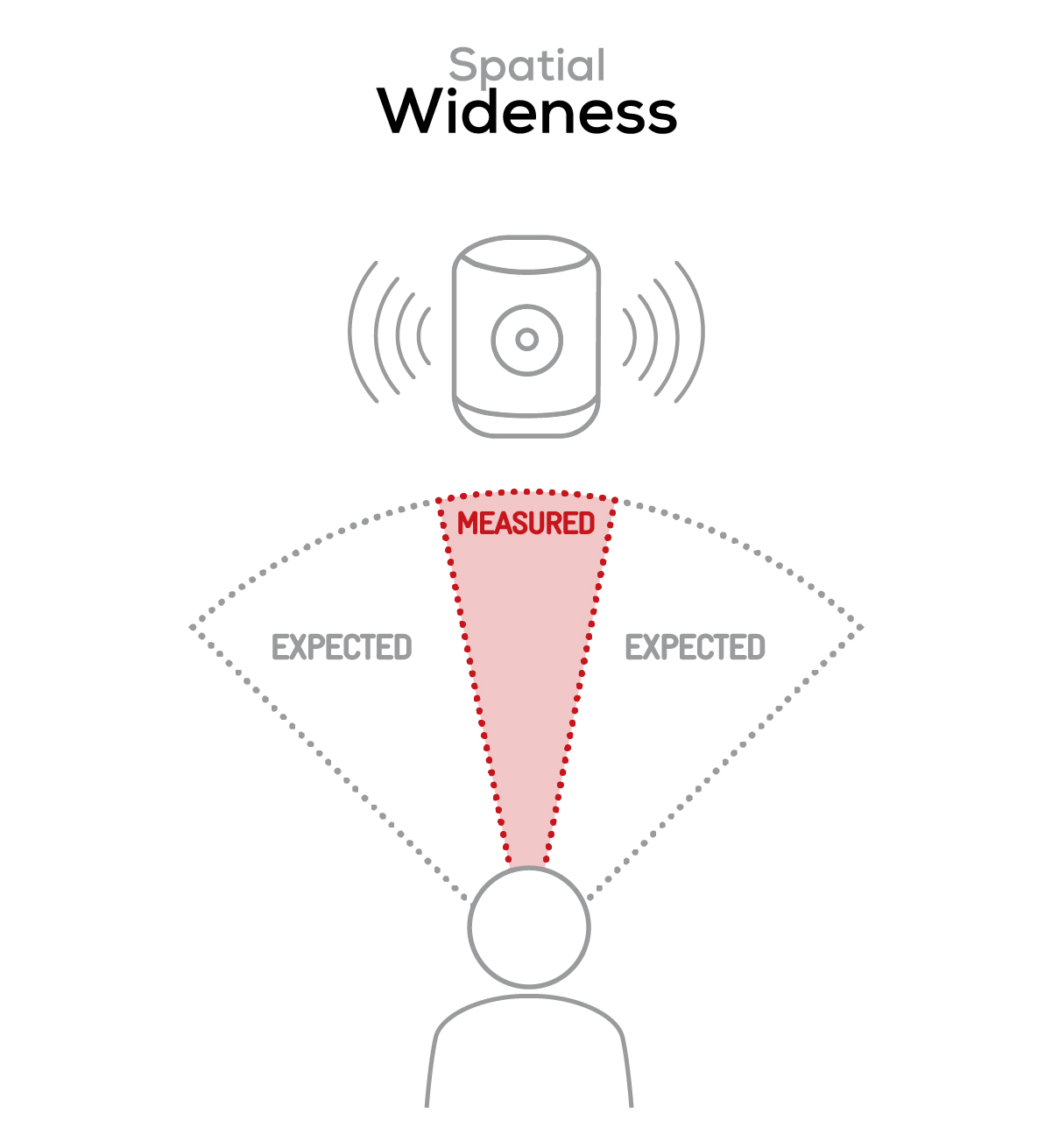
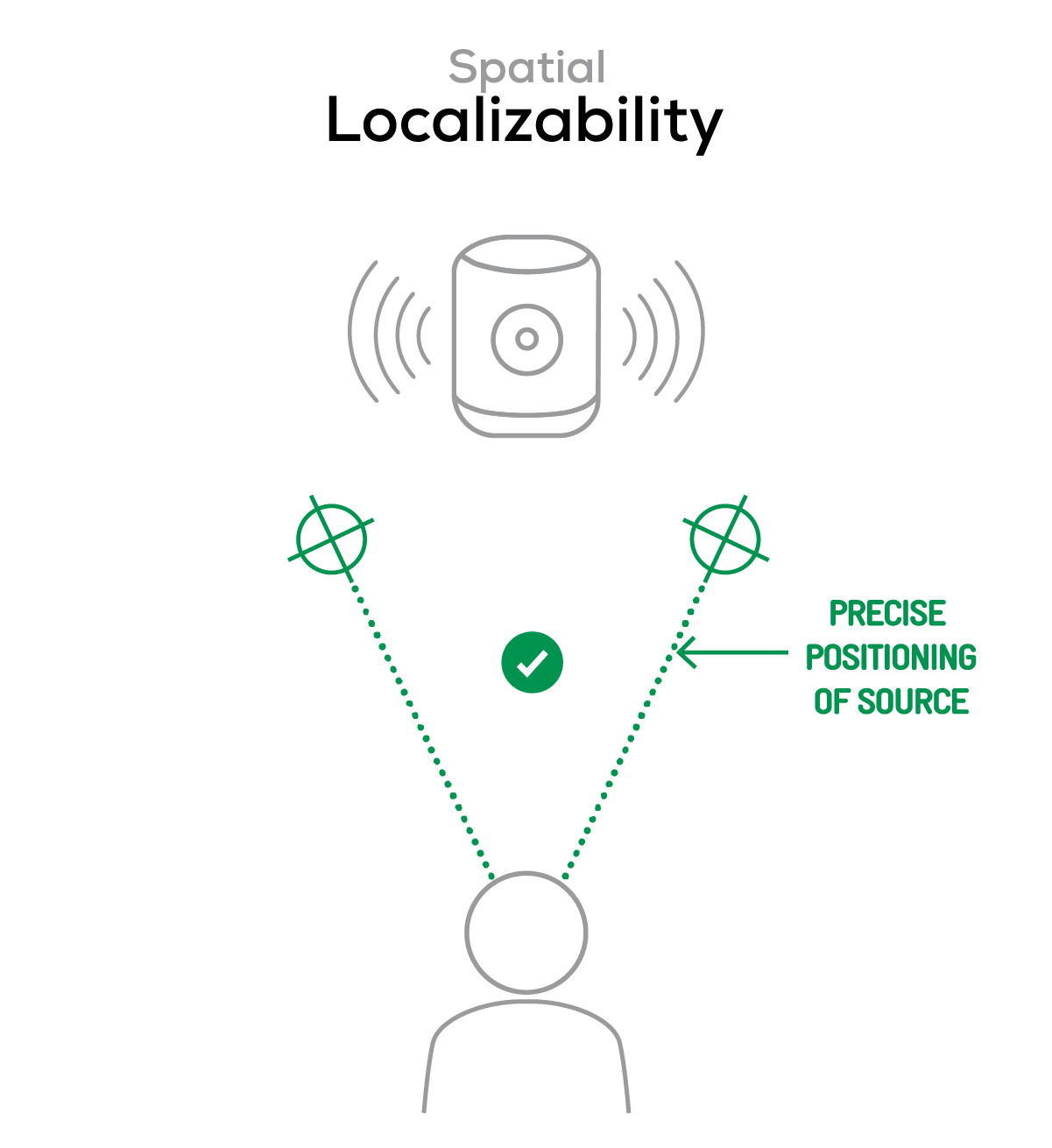

Volume
JBL Charge 5
141
Our volume tests measure both the maximum loudness a speaker is able to produce and how smoothly volume increases and decreases based on user input.
Volume is not one the Charge 5’s strongest categories. As shown in the graph above, volume steps are quite inconsistent — especially the first ones, which are too far apart to allow the user to precisely adjust the listening volume. Further, the speaker didn’t manage to reach the minimal loudness required by our protocol for maximum volume evaluation. That all said, minimum volume is well tuned.

Here are a few sound pressure levels (SPL) we measured when playing our sample recordings of hip-hop and classical music at maximum volume:
| Correlated Pink Noise | Uncorrelated Pink Noise | Hip-Hop | Classical | Latin | Asian Pop | |
| Sony SRS-XB33 | 84.2 dBA | 81.1 dBA | 81.9 dBA | 74.1 dBA | 82.3 dBA | 75.8 dBA |
| JBL Charge 5 | 72.2 dBA | 69.3 dBA | 69.9 dBA | 61.4 dBA | 71.6 dBA | 63.7 dBA |
| Sonos Roam | 80.7 dBA | 78 dBA | 75 dBA | 70.3 dBA | 77.5 dBA | 69.9 dBA |

Artifacts
JBL Charge 5
133
Our artifacts tests measure how much source audio is distorted when played back, along with such other sound artifacts as noise, pumping effects, and clipping. Distortion and other artifacts can occur both because of sound processing and because of the quality of the speakers.
Considering its size, the JBL Charge 5 excels at controlling artifacts. In fact, it receives the second-highest Artifacts sub-score (by far) of all Essential speakers we have tested to date.
Perceptually, it is simply devoid of artifacts across all use cases, even at maximum volume (aside from a subtle hint of dynamic compression). The only flaws measured by our equipment occurred when playing specific test signals, such as pure sine waves. All in all, the Charge 5 delivers a very clean sound.
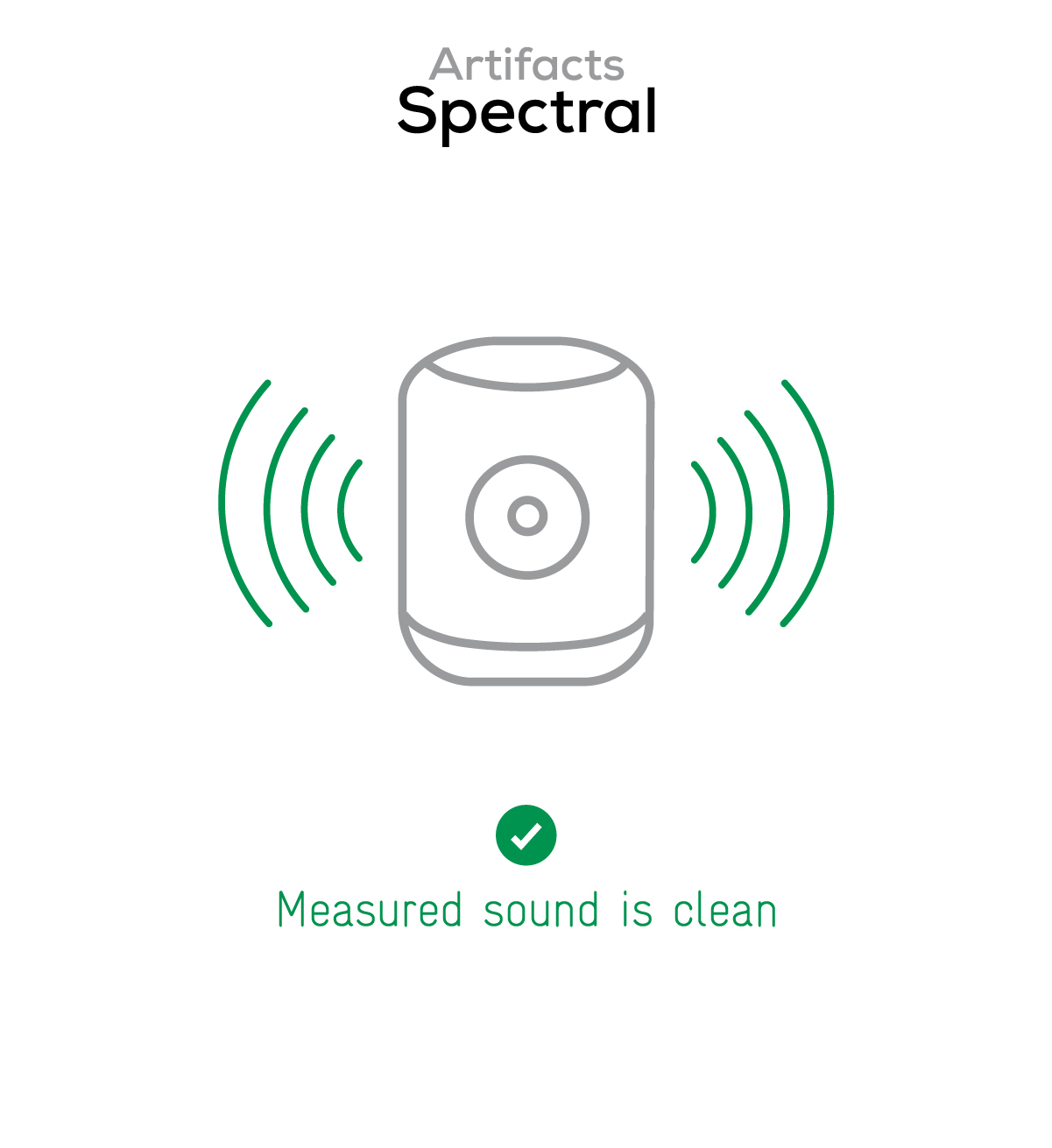

Conclusion
If you’re looking for an affordable speaker to party or watch movies with, our Wireless Speaker Essential ranking or our Best wireless speakers article can guide you to more fitting options. But that said, besides its valuable non-audio attributes — such as its IP67 certification and its usability as a power bank — the Charge 5 ranks among the best essential speakers we’ve put through our Audio protocol so far. Its natural timbre, good dynamics, and excellent control of sonic artifacts, along with its good performance at both loud and low volumes, make it very well suited for outdoor use, friendly gatherings, listening to podcasts in the kitchen and music in the bathroom, or playing back any kind of audio content before going to sleep.



DXOMARK invites our readership (you) to post comments on the articles on this website. Read more about our Comment Policy.